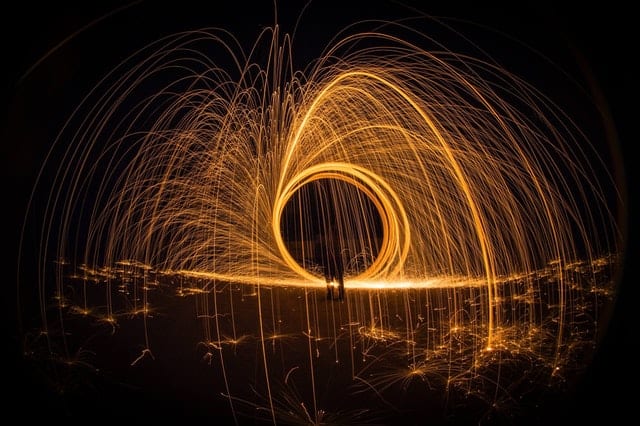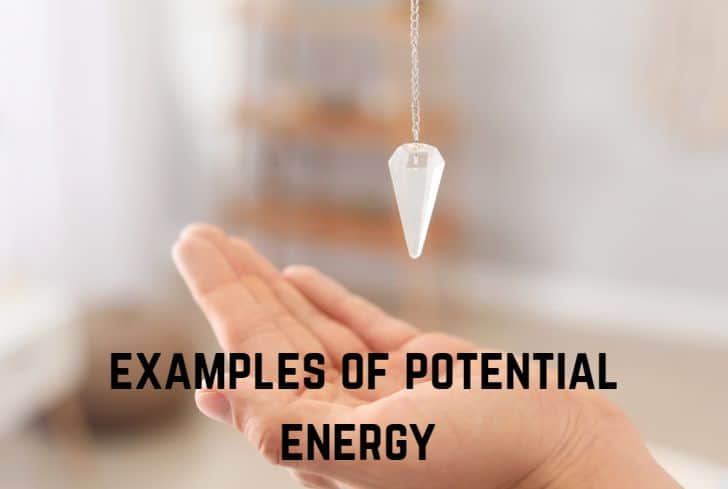What is Potential Energy: Types and Facts

Many different forms of energy can be called a Potential energy. Each one of these forms of energy is connected with a force that acts accordingly to the characteristic of the matter (mass, elasticity, temperature and electric charge). Potential energy can be described as 3 characteristics that a specific object has. The shape of an object, the position of an object, and its readiness to transform into Kinetic energy. Kinetic energy is energy that specific object possesses while moving. Potential and Kinetic energy are parts of Mechanical energy.
Potential energy is the energy that has been stored by an object. It is the energy possessed by an object that is not in the motion. Potential energy is energy that links the structure of two or more objects. There is a strong force between objects, e.g. two magnets when held apart have more potential energy than when they are close together.
When the system change and only one object is in motion, which is when potential energy turns into kinetic energy. The formula of the potential energy depends on the type of potential energy. For example, the formula for gravitational potential energy is P.E.= mgh, m is a mass in kilograms, g is acceleration because of gravity (9.8 m/s2) and h represents height in meters.
Types of Potential Energy
Potential energy can be divided based on 4 types of stored energy. It can be gravitational, nuclear, chemical or mechanical (elastic).
Gravitational Potential Energy
Gravitational potential energy is a potential energy influenced by gravity. Gravitational energy can be increased when mass moves away from the epicenter of Earth or any object that is big enough to produce significant gravity (big planets and stars, our sun, etc).
For example, lifting a wrecking ball away from the ground, it potential energy rises. Lifting a wrecking ball is work, and work is an interaction between wrecking ball and a person who lifts it. The higher the wrecking ball is it is harder to lift it, but wrecking ball has more gravitational potential energy stored. When is wrecking ball released, potential energy is transformed into kinetic energy, moving faster and faster in the direction of Earth.
Nuclear Potential Energy
In the modern world, all the nuclear power plants are fueled by fission. Uranium or plutonium atoms are broken apart, releasing a lot of energy. Hydrogen atoms, if they are exposed to the sun experience nuclear fusion, uniting to form helium and successively releasing large quantities of energy in the form of electromagnetic radiation and thermal energy.
Nuclear energy is the stored potential of the nucleus of an atom. Most atoms are steady on the Earth; atoms keep their characteristics as particular elements, like helium, hydrogen, carbon, and iron, as known in the Periodic Table of Elements. Every element can be recognized, and it is different because of the number of protons in the nucleus. Nuclear reactions alternate the essential identity of elements by dividing up an atom’s nucleus or fusing together more than one nucleus. These changes have been called fission and fusion.
Chemical Potential Energy
Chemical energy is deposited in the links between the atoms in compounds. When connections are broken, or when they formed through the chemical reaction, that is when deposed energy is transformed. Similar to letters of the alphabet that can be reordered to create new words with completely diverse meanings, during chemical reactions, atoms are moving around finding new partners with entirely different personalities.
While our bodies burning a sugar (a combination made of the elements hydrogen, oxygen, and carbon), the elements are known as water and carbon dioxide. In these reactions, there is absorbing and releasing the energy, but the complete result is getting energy from the sugar, and bodies use that energy to do some actions.
Chemical reactions that are producing clear energy are exothermic. Exothermic chemical reactions can be seen during burning the wood. Thermal and Electromagnetic energy is released. Not all the chemical reactions release energy. For example, Endothermic reaction needs the energy to start and to lasts, so adding heat or light is necessary for releasing the energy.
Elastic Energy
Elastic energy is the potential mechanical energy stored in the configuration of a material or physical system as work is performed to distort its volume or shape such as stretch elastic band or a coiled spring. On an atomic scale, the collected energy is a temporary pressure placed on the connections between atoms, and that means that there is no permanent modification of the material. These connections absorb energy as they are pressured, and release that energy as they are relaxed.
Interesting Facts About Potential Energy
Fact 1: Potential energy is expressed in science as a U.
Fact 2: The term “Potential energy” first has been used by William Rankine, a Scottish engineer, and physicist, in the 19th century.
Fact 3: But, the concept potential energy dates all the way in the Ancient Greece, it was used by a Greek philosopher Aristotle.
Fact 4: The pendulum of a clock, when is at the top of swing has gravitational potential energy.
Fact 5: Gravitational potential energy and height are directly connected. When one double, the other one will double too.
Fact 6: Elastic potential energy is the one that is saved in objects that can be compressed or stretched.
Fact 7: The body has more elastic potential energy the more it can be stretched.
Fact 8: Tennis ball, trampolines, bungee ropes, they all have elastic potential energy.
Fact 9: The energy that has been saved by fossil fuels is called chemical potential energy.
Fact 10: Ball in someone’s hand has more potential energy that a ball on the ground.
Fact 11: Conservative force is able to store energy like potential energy.
Fact 12: In order to have potential energy, the object must be changed by any type of force.
Fact 13: The two main types of potential energy are gravitational potential energy and elastic potential energy.
Fact 14: The name potential energy is because there is a potential for using stored energy.
Fact 15: Potential energy is transformed into some other energy when the object is acted by a force.
Fact 16: When objects raise its speed, the potential energy decreases.
Fact 17: Using a bow and arrow, potential energy from the archer is transferred through it hand to the bow. It is the highest when a bow is pulled back.
Fact 18: Energy from the fossil fuels has been called chemical potential energy.
Fact 19: A car on a top of the hill has the most potential energy. If it’s still than car does not has kinetic energy.
Fact 20: Acceleration of gravity is 9.81 m/s2
Fact 21: Battery is a good example of potential energy. It has chemical form of potential energy.
Fact 22: Quaterback’s hand before the ball has been released is a potential energy.
Fact 23: Wheels on roller skates have potential energy while they are not moving.
The potential energy possessed by a body depends on its mass and height from the ground. The bigger the height or the mass is the potential energy is bigger. Joule (J) is the standard unit for measuring potential energy. When using the potential energy it turns into kinetic energy. It can be said that potential energy is kinetic energy in the making. Potential energy is very important because it helps to keep track of the energy that is stored in an object, and that can be letter put into a kinetic energy. A potential energy determines the form of existence of matters at atomic level.






